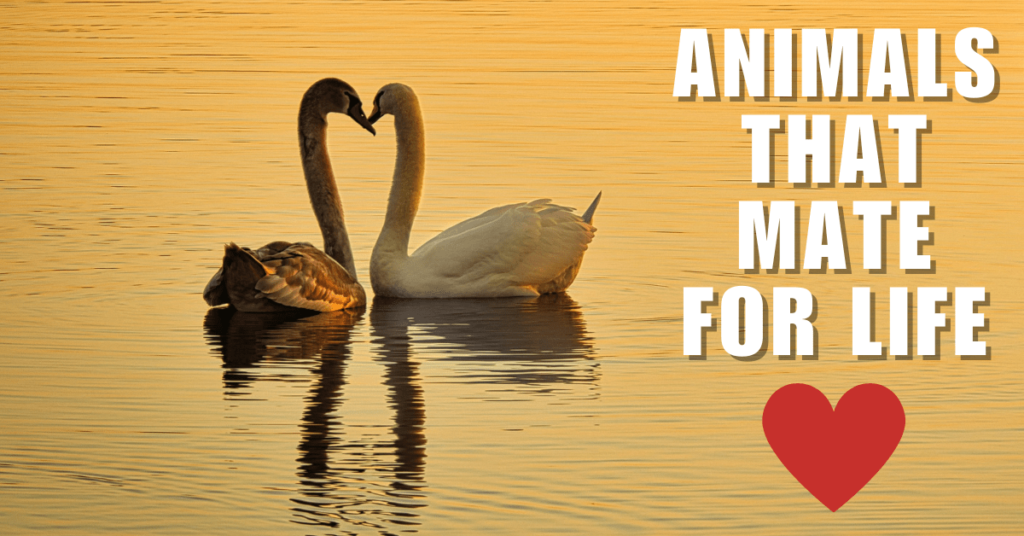Introduction
Camouflage is a remarkable survival strategy employed by a wide array of animals to blend seamlessly into their environments. This natural adaptation allows creatures to evade predators, surprise their prey, and thrive in their habitats. Camouflage animals are experts at blending into their surroundings, making them nearly invisible to predators and prey alike. In this article, we delve into the intriguing world of camouflage, showcasing how these animals use their unique adaptations to remain hidden or enhance their predatory skills.
Understanding Camouflage
Definition of Camouflage
Camouflage is the technique by which an animal blends into its surroundings, making it difficult for predators or prey to detect it. This adaptation is crucial for survival as it allows animals to either hide from predators or sneak up on their prey without being noticed.
Types of Camouflage
Background Matching:
Animals with background matching camouflage have colors and patterns that closely resemble their environment. This type of camouflage allows animals to blend in perfectly with their surroundings. For example, many insects, like the Stick Insect, have evolved to mimic twigs and leaves to avoid detection.
Disruptive Coloration:
This type involves patterns and colors that break up the animal’s outline, making it harder for predators to see it as a whole. An example of this is the Zebra’s stripes, which can make it difficult for predators to single out one individual in a herd. The study of animal camouflage reveals how different species use color, patterns, and textures to match their environments.
Mimicry:
Some animals use mimicry to imitate other objects or organisms. For instance, the Mimic Octopus can imitate the appearance and behavior of other sea creatures to avoid predators and lure in prey.
How Camouflage Helps Animals
Predator Avoidance
For prey animals, camouflage is a crucial defense mechanism. For example, the Snow Leopard has a coat of fur patterned with rosettes and spots that blend into the rocky, snowy environment of its mountainous habitat. This camouflage allows it to avoid detection by potential threats and helps it stalk its prey with greater success.
Prey Capture
Predators use camouflage to approach their prey unnoticed. The Cuttlefish is a master of disguise, changing its skin color and texture to blend into the ocean floor. This ability allows it to ambush fish effectively. Similarly, the Mimic Octopus can mimic the appearance and behavior of other sea creatures to deceive and capture prey. Researchers study animals which camouflage to understand how these adaptations help in predator evasion and prey capture.
Top 12 Camouflage Animals:
The fascinating world of camouflage animals highlights the importance of adaptation in the wild. From the dense forests to the ocean depths, camouflage animals demonstrate nature’s ingenuity in developing strategies that help them remain hidden in plain sight.
Here’s a detailed list of animals that camouflage effectively:
1. Stick Insect (Phasmatodea)

Description: Camouflage animals, such as the stick insect and the flounder, have developed remarkable adaptations that allow them to become nearly invisible in their habitats. The Stick Insect is renowned for its incredible resemblance to twigs or branches. This insect has evolved body shapes and colorations that mimic dead branches, effectively blending into its forest or woodland habitat. By imitating the appearance of sticks, the Stick Insect avoids predation by becoming nearly invisible to its predators.
Habitat: Found in forests and woodlands across various regions, the Stick Insect prefers environments with abundant vegetation that enhances its camouflage.
Camouflage Strategy: The insect’s twig-like appearance allows it to remain hidden among actual sticks and branches, significantly reducing its visibility to potential predators.
2. Chameleon (Chamaeleonidae)
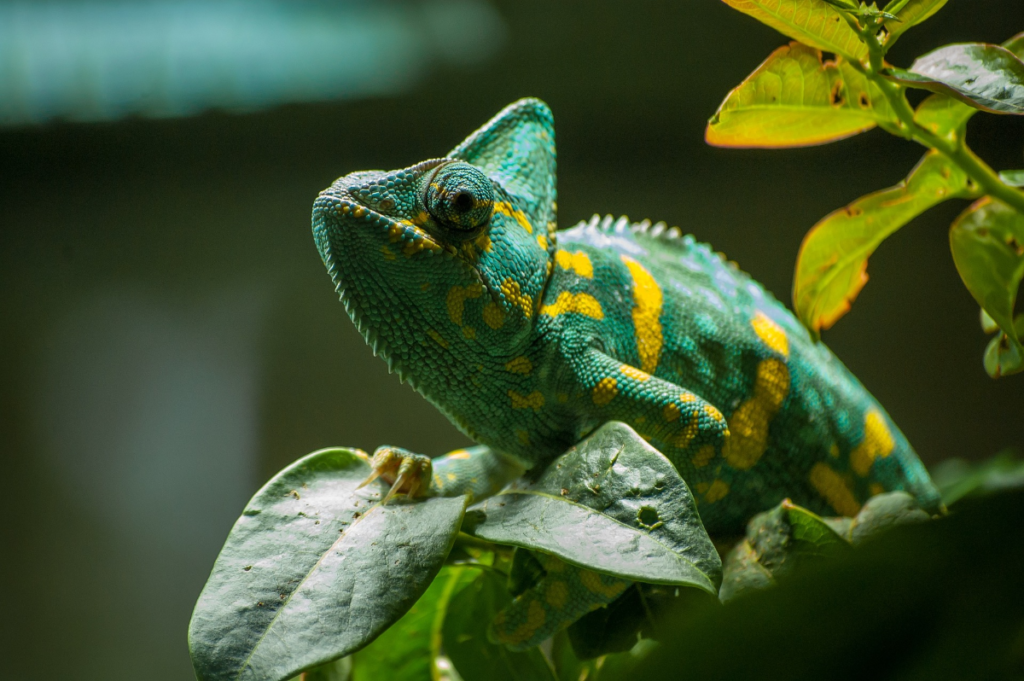
Description: Camouflage animals, including the chameleon and the cuttlefish, showcase an array of adaptations that allow them to blend seamlessly into their surroundings. The Chameleon is a unique reptile known for its extraordinary ability to change skin color, allowing it to blend seamlessly into its environment. This remarkable trait is not only used for camouflage but also for communication and temperature regulation.
Habitat: Chameleons are primarily found in rainforests, savannas, and sometimes desert regions, where their color-changing ability helps them adapt to a wide range of surroundings, from lush green foliage to arid landscapes.
Camouflage Strategy: Chameleons utilize specialized cells called chromatophores in their skin to rapidly change color, adjusting to the colors and patterns of their surroundings. This adaptive camouflage provides them with an effective means of evading predators and sneaking up on prey.
3. Common Octopus (Octopus vulgaris)
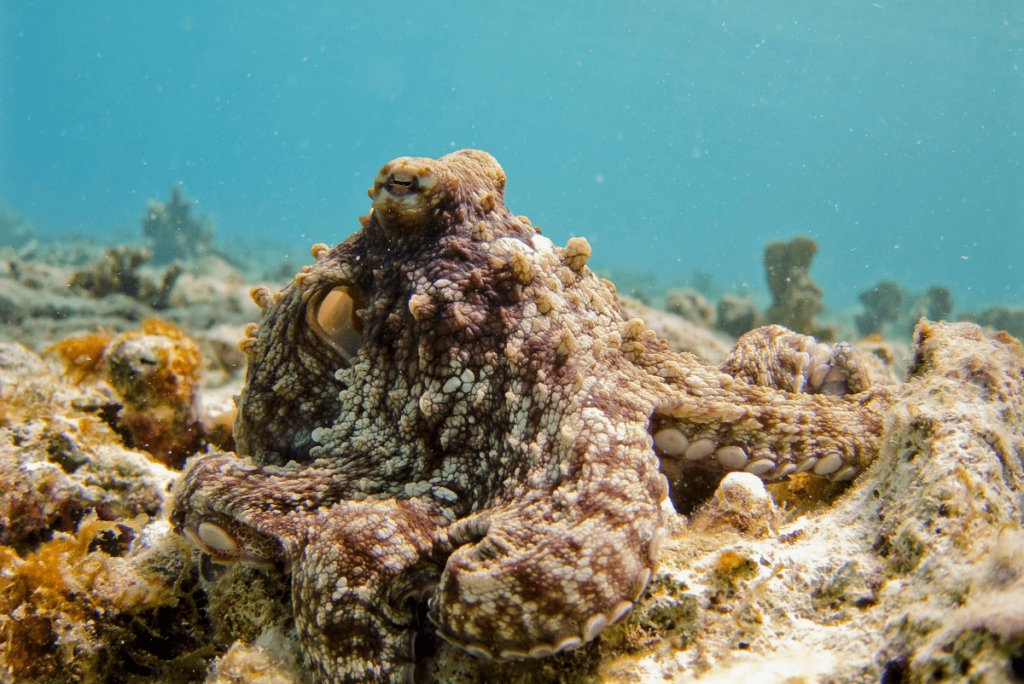
Description: The Common Octopus is a highly adaptable cephalopod with the remarkable ability to change its skin color and texture. This octopus can blend into a variety of marine environments, from rocky seabeds to sandy ocean floors, by altering its appearance to match its surroundings.
Habitat: Commonly found in oceans and coral reefs around the world, the Common Octopus thrives in diverse marine habitats where its camouflage capabilities offer protection and hunting advantages.
Camouflage Strategy: Utilizing specialized cells called chromatophores, the octopus adjusts its skin color and texture to blend into its environment, effectively hiding from predators and ambushing prey.
For an intriguing look at the cognitive abilities behind camouflage, check out our article on How Smart Are Octopuses, which explores the remarkable intelligence that supports their sophisticated camouflage techniques.
4. Flounder (Paralichthys)

Description: The Flounder is a flatfish that exhibits exceptional camouflage abilities. Its body is adapted to blend into the ocean floor, where it can change color and pattern to match the substrate. This camouflage helps the Flounder avoid predators and surprise its prey by lying motionless on the seafloor.
Habitat: Flounders are found on the ocean floor in various marine environments, including sandy and rocky substrates, where their camouflage is particularly effective.
Camouflage Strategy: By blending into the ocean floor’s color and texture, the Flounder remains concealed from both predators and prey, enhancing its survival and hunting efficiency.
5. Barn Owl (Tyto alba)
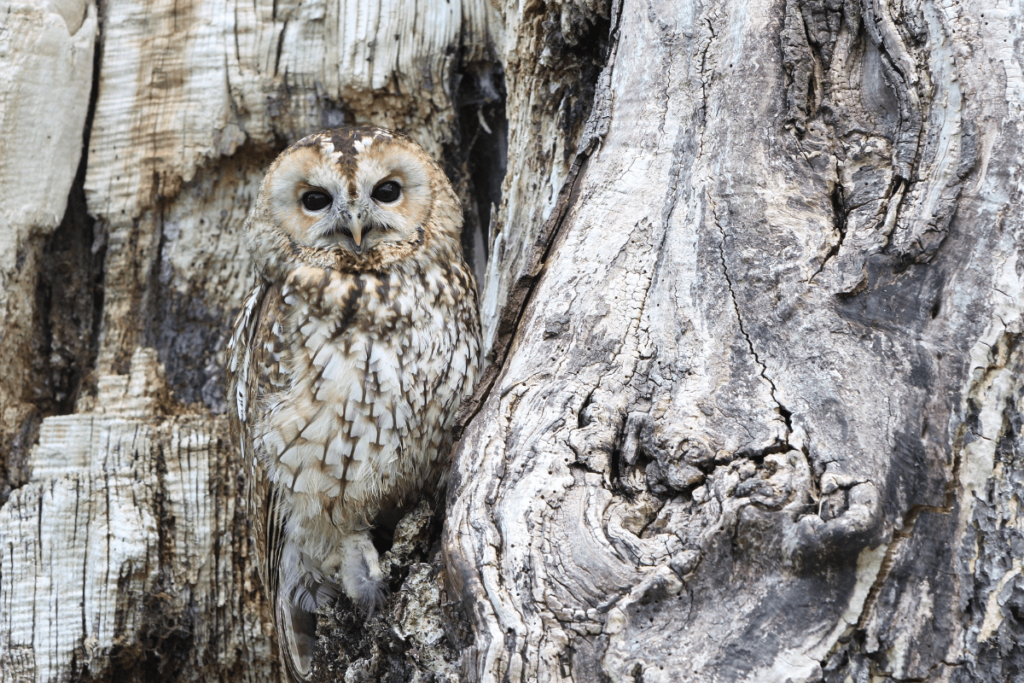
Description: Some animals that camouflage, like the owls and geckos, rely on their natural coloration to remain hidden from both predators and prey. The Barn Owl features mottled feathers and a heart-shaped face that provides excellent camouflage in its nocturnal environment. Its plumage blends with the shadows and textures of barns, fields, and open landscapes, aiding in stealthy hunting and evasion of predators.
Habitat: Found in open fields, barns, and rural areas, the Barn Owl’s camouflage is well-suited for its hunting grounds, where it relies on its plumage to remain inconspicuous.
Camouflage Strategy: The owl’s feather patterns and colors blend with the night-time environment, allowing it to approach prey quietly and remain hidden from potential threats.
6. Malayan Leaf Frog (Megophrys nasuta)
Description: The Malayan Leaf Frog, also known as the Long-Nosed Horned Frog, is a master of disguise, with its body perfectly mimicking the appearance of a dead leaf. Its pointed snout, ridged back, and cryptic brown coloration allow it to blend seamlessly into the leaf litter on the forest floor. This amphibian’s unusual appearance helps it avoid predators and ambush prey with ease.
Habitat: The Malayan Leaf Frog is typically found in the tropical rainforests of Southeast Asia, particularly in countries like Malaysia, Indonesia, and Thailand. It thrives in damp, lowland forests, where the dense leaf litter provides the perfect environment for its camouflage.
Camouflage Strategy: The Malayan Leaf Frog’s camouflage is so effective that it is often mistaken for a fallen leaf. Its coloration and body shape are designed to resemble the dry leaves scattered on the forest floor. When threatened, the frog remains motionless, relying on its natural disguise to remain undetected by predators. This strategy not only protects it from being eaten but also allows it to lie in wait for unsuspecting prey, which it captures with a sudden, swift strike.
7. Snow Leopard (Panthera uncia)
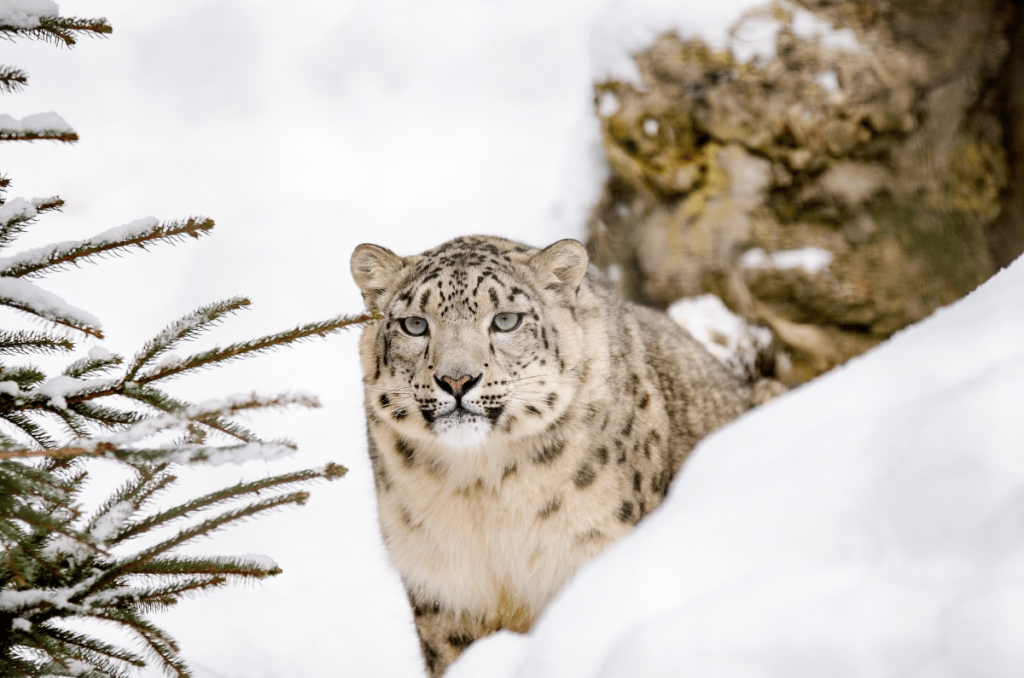
Description: The Snow Leopard’s fur is patterned with rosettes and spots that blend seamlessly into the rocky, snowy terrain of its mountainous habitat. This camouflage helps the leopard to remain concealed from prey and predators while navigating its harsh environment.
Habitat: Native to the mountainous regions of Central and South Asia, the Snow Leopard’s camouflage is tailored to its rocky and snowy surroundings.
Camouflage Strategy: The leopard’s spotted coat mimics the rocky and snowy landscape, allowing it to stalk its prey and avoid detection in its rugged habitat.
8. Arctic Fox (Vulpes lagopus)
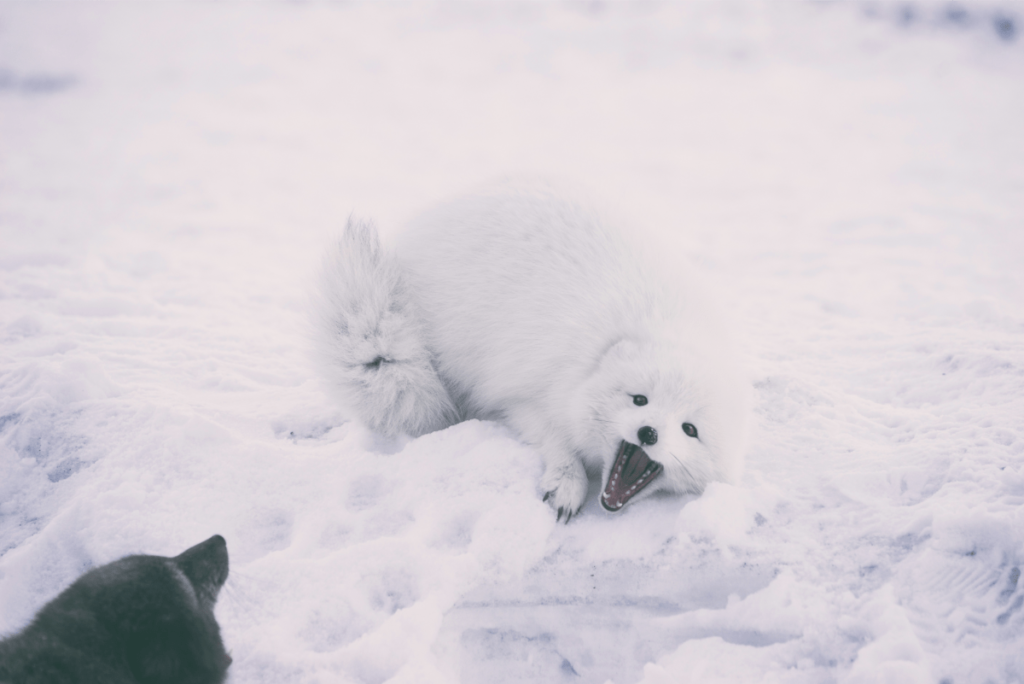
Description: The Arctic Fox undergoes a remarkable seasonal change in its fur color, switching from white in winter to brown in summer. This color change helps it blend into the snowy landscape during the winter and the tundra during the summer, providing year-round camouflage.
Habitat: Inhabits the Arctic tundra, where its fur color adapts to match the changing seasons and provide effective camouflage.
Camouflage Strategy: The fox’s fur changes color with the seasons, blending into the snow-covered terrain in winter and the brown tundra in summer, aiding in both predator avoidance and prey capture.
9. Cuttlefish (Sepiida)
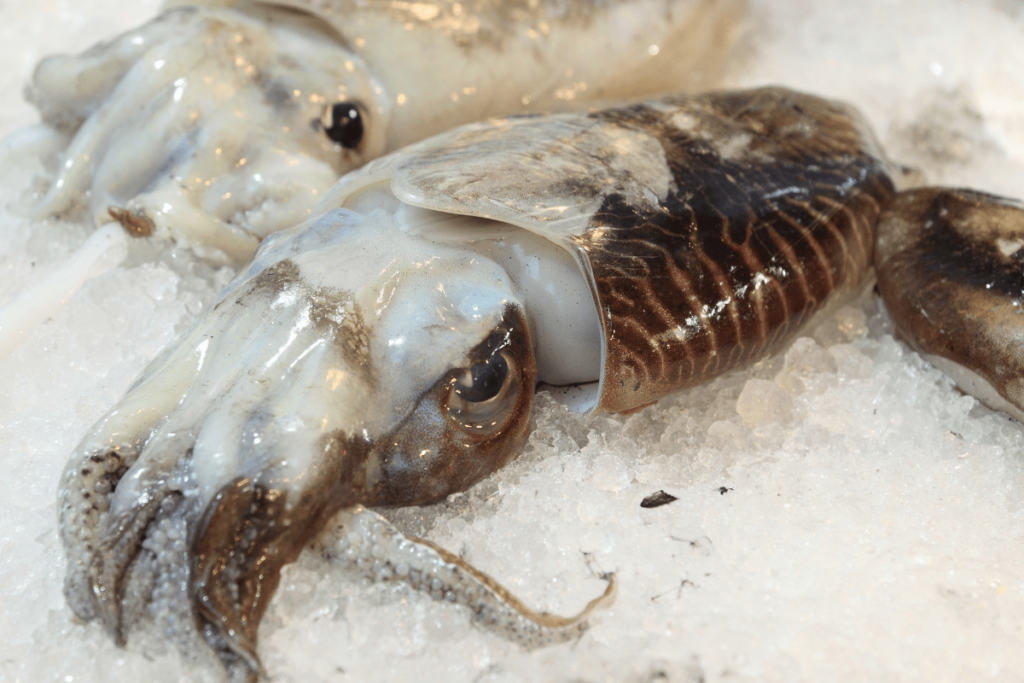
Description: The Cuttlefish possesses the ability to alter its skin color and texture to match the ocean floor or other marine environments. This dynamic camouflage allows the cuttlefish to blend into a wide range of underwater habitats, making it a formidable ambush predator.
Habitat: Found in oceans and coral reefs, the Cuttlefish uses its camouflage skills to adapt to various marine environments.
Camouflage Strategy: The cuttlefish changes its skin color and texture through specialized cells, allowing it to blend seamlessly into its surroundings and remain hidden from both predators and prey.
10. Mimic Octopus (Thaumoctopus mimicus)
Description: The Mimic Octopus has developed an extraordinary ability to imitate the appearance and behavior of other sea creatures, such as lionfish and flatfish. This mimicry serves as a defense mechanism against predators and as a strategy to lure in unsuspecting prey.
Habitat: Inhabits the Indo-Pacific waters, where it can encounter a diverse range of marine species and environments.
Camouflage Strategy: By mimicking the appearance and movements of other animals, the Mimic Octopus avoids predation and enhances its ability to capture prey through deception.
11. Praying Mantis (Mantodea)
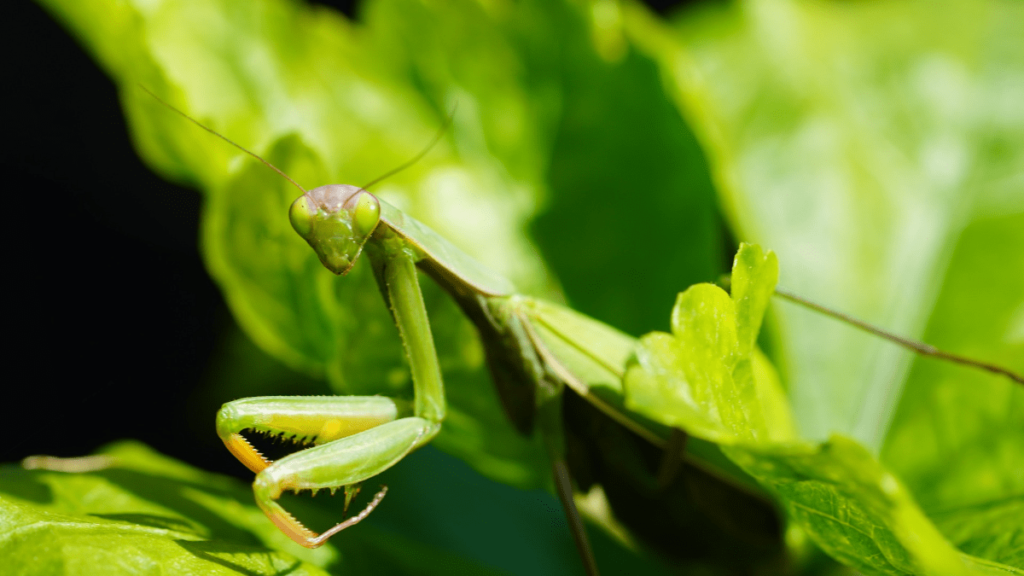
Description: The Praying Mantis is renowned for its leaf-like appearance and posture, which helps it blend into vegetation. Its body shape and color mimic dead leaves or flowers, allowing it to stay hidden from predators and ambush prey with precision.
Habitat: Found in tropical and subtropical regions, the Praying Mantis thrives in environments with dense vegetation where its camouflage is most effective.
Camouflage Strategy: The mantis’s body and posture resemble leaves or flowers, enabling it to blend into its surroundings and remain undetected by both predators and prey.
12. Common Potoo (Nyctibius griseus)
Description: The Common Potoo is a nocturnal bird known for its incredible camouflage and eerie, mournful calls. It has a cryptic plumage that perfectly mimics the appearance of tree bark, allowing it to blend seamlessly into its surroundings during the day. With its large eyes and wide mouth, the Common Potoo is an expert insect hunter, catching prey mid-flight with precision.
Habitat: Commonly found in Central and South America, the Common Potoo inhabits forests, woodlands, and savannas. During the day, it perches motionless on tree stumps or branches, relying on its natural camouflage to avoid detection by predators.
Camouflage Strategy: The Common Potoo’s primary camouflage strategy is its remarkable ability to remain perfectly still while perched on a tree branch or stump. Its plumage is mottled brown and gray, resembling the texture and color of bark. When threatened, the bird assumes a rigid posture with its head pointed upwards, further enhancing its resemblance to a broken tree branch. This strategy makes the Common Potoo almost invisible to predators and humans alike.
13. Leaf-Tailed Gecko (Uroplatus)
Description: The Leaf-Tailed Gecko features a tail that closely resembles a dead leaf, helping it blend seamlessly with the forest floor. This gecko uses its leaf-like tail not only to avoid predators but also to capture prey by remaining motionless and unnoticed.
Habitat: Native to Madagascar’s forests, the Leaf-Tailed Gecko thrives in the leaf litter and undergrowth where its camouflage is most effective.
Camouflage Strategy: The gecko’s tail mimics the appearance of a decaying leaf, providing excellent camouflage against predators and aiding in its stealth during hunting.
14. Leaf Insect (Phylliidae)
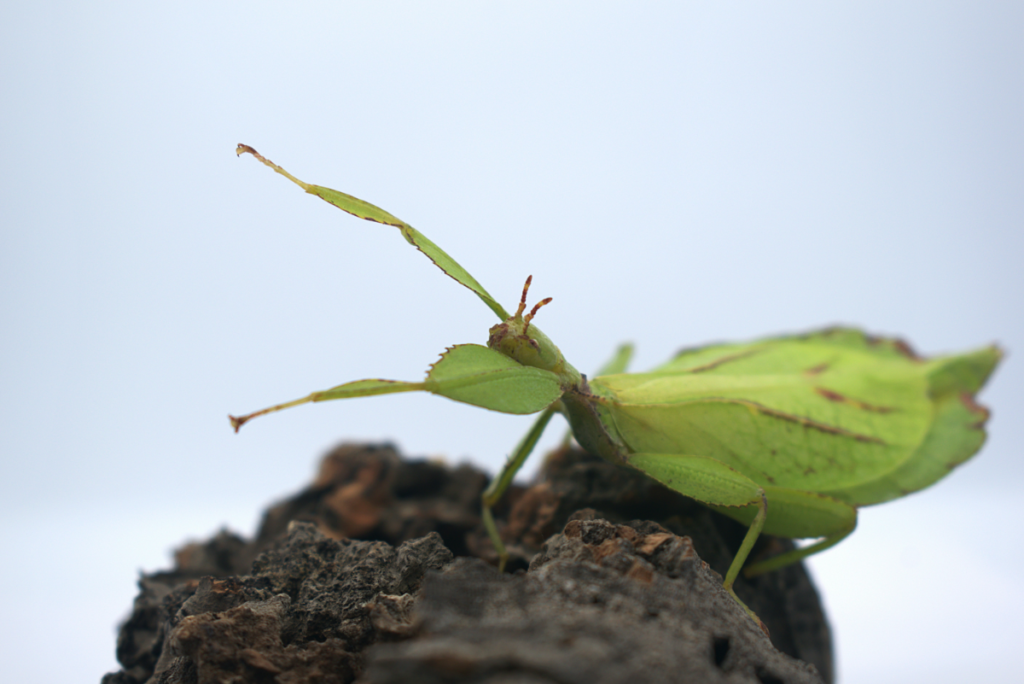
Description: Leaf insects, also known as walking leaves, are remarkable creatures known for their uncanny resemblance to actual leaves. Their bodies are flat and broad, with veins and edges that mimic the texture and color of leaves, making them almost indistinguishable from the foliage they inhabit. Some species even have brown patches that look like spots of decay, enhancing their camouflage.
Habitat: Leaf insects are primarily found in the tropical forests of Southeast Asia, including regions like Malaysia, Indonesia, and the Philippines. They thrive in dense, leafy environments where their camouflage offers the best protection from predators.
Camouflage Animals Strategy: The leaf insect’s camouflage is one of nature’s most impressive examples of mimicry. Not only does its body shape and coloration resemble a leaf, but it also moves with a gentle, swaying motion that mimics the way a leaf might move in the wind. This behavior further deceives predators, making it nearly impossible for them to distinguish the insect from the leaves around it. By blending in so effectively, leaf insects avoid detection and reduce the likelihood of being eaten by birds and other predators.
15. Stonefish (Synanceia)

Description: The Stonefish is a highly venomous fish with a body that resembles a rock or coral. Its rough, mottled skin and color patterns make it nearly indistinguishable from its surroundings, providing both camouflage and protection from predators.
Habitat: Inhabits coral reefs and rocky seafloors in the Indo-Pacific region, where its camouflage helps it avoid detection.
Camouflage Strategy: The Stonefish’s rock-like appearance and coloration blend seamlessly with the seafloor, allowing it to remain hidden from predators and ambush prey.
Conclusion
Camouflage is a fascinating adaptation that plays a crucial role in the survival of many animals. By blending into their surroundings, these creatures can evade predators, capture prey, and thrive in their respective environments. In the wild, camouflage animals like the chameleon and octopus use their unique abilities to change color and texture as a means of protection and hunting.
From the Stick Insect’s twig-like appearance to the Mimic Octopus’s ability to imitate other sea creatures, the strategies employed by these animals highlight the incredible diversity of nature’s camouflage techniques. Animals that are camouflaged have evolved to blend seamlessly with their surroundings, using coloration and patterns to avoid detection.


